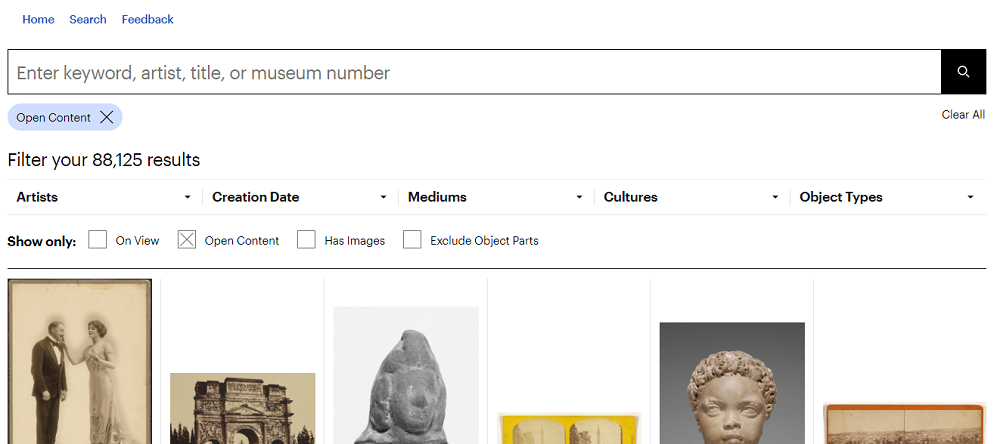
The J. Paul Getty Museum has opened up 88,000 digital images of artwork and photos in its Open Content database for free and restriction-free public use.
To be clear, we’re talking about the Getty Museum here, not Getty Images or anything directly affiliated with it except in the shared name. Getty Images has an entirely different and much less altruistic reputation for how it handles public domain images.
With that sorted, The Getty Museum’s trove of additions to its database is entirely open to anyone for download, editing, and repurposing without restrictions of any kind thanks to a Creative Commons Zero, or CC0 license.
It’s also worth noting that these are high-resolution images, making them potentially useful for all kinds of unique artistic, personal or commercial projects.
As Getty itself explains in a publicity blurb, “Add a print of your favorite Dutch still life to your gallery wall or create a shower curtain using the Irises by Van Gogh — the possibilities are endless,”
The Museum further emphasizes,
“The Open Content Program makes high-resolution images of public domain artwork from the Getty collections freely available, without restrictions, to advance the research, teaching, and practice of art and art history.”
The Open Content database can be accessed right here. You can easily browse the database’s massive trove of additions by specific keywords, artist names, titles, image types, artistic processes or even museum numbers.

This database has existed since way back in 2013, but now its entire stock of imagery has been given a CC0 license for the first time. This is what makes it particularly unique as of today.
According to Jenn Stringer, VP and chief digital officer of the J. Paul Getty Trust, “We are committed to supporting and growing a diverse audience and have already noticed an uptick in image downloads on our site, averaging about 30,000 per month,”
She adds, “This shows demand is high and we anticipate that number will grow as more images from the Getty collection are made available.”
In other words, you can expect even more images to enter the Open Content trove under its CC0 license in the coming months and years.
Among the 88,125 images currently available for search and download, not all are photos but tens of thousands are. One example is a collection of over 44,000 19th-century albumen silver photographic prints from Getty’s collection, now digitized in high resolution.


One example: Main Street, Winter, Bangor, Maine, by Charles L. Marston from about 1874; Albumen silver print; 84.XC.873.9952
Other types of historically unique photographic images digitized for the database include collodion prints, cyanotypes, gelatin silver prints, tintypes, calotypes and ambrotypes among others.
Overall, the database contains more than 50,000 photos across many types. Here are a few samples:






One drawback of the database is that searches for “photograph” don’t quite work with the Open Content database search bar. Instead, terms have to be very precise if they’re done by image type and this means specifying the process you’re looking for.
However, with a bit of exploratory trial and error, it’s possible to dig up all kinds of historical (and relatively modern) treasures for whatever your needs.
The Getty Museum has repeatedly affirmed its commitment to this project and to making it more common among other organizations.
Richard Rand, Getty’s associate director of collections explains, “We’re glad the art community has adopted CC0 as the industry standard to help broaden the impact of collections worldwide and remove barriers to experiencing art,”
Again, if you’re interested in browsing the whole collection or hunting for photos and images of a specific type for your projects, it’s fully accessible right now.
You might also want to check out the even bigger archive of digitized public domain imagery from the New York Public Library. Its collection is more than twice as large as the Getty Museum’s and has been open for public use since 2016.
Highly Recommended


Check out these 8 essential tools to help you succeed as a professional photographer.
Includes limited-time discounts.






